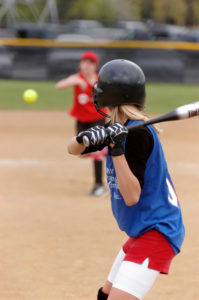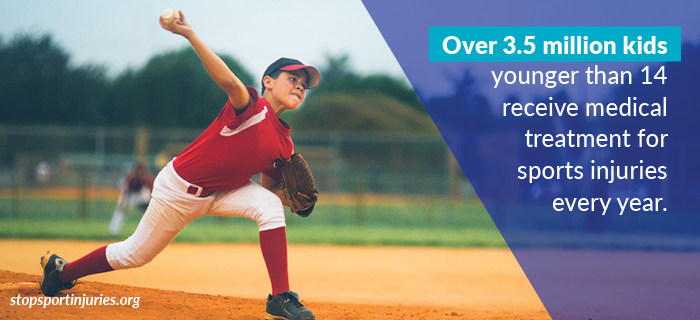Youth Sports Injuries
Millions of American children and teenagers participate in organized sports. The kids exercise and learn the importance of teamwork — and, unfortunately, sometimes get injured. Sports injuries, such as pulled muscles and concussions, send more than 2.6 million children to emergency rooms every year, according to the Centers for Disease Control and Prevention. Even if an injury isn’t serious enough for a trip to the hospital, it can cause pain and interfere with a child’s life.
It’s important that sports injuries be assessed and treated properly so kids can get back to their regular activities and avoid developing chronic pain.
It’s important that sports injuries be assessed and treated properly so kids can get back to their regular activities and avoid developing chronic pain or long-term injuries. A physician who specializes in pain medicine can help. Anesthesiologists are medical doctors who specialize in anesthesia, pain management, and critical care medicine — and they can help your young athlete prevent and treat sports-related injuries the safe way.
What is a sports injury?

Young athletes — especially those younger than 8 — are more prone to sports injuries than adults due to ongoing growth spurts, slower reaction times, and still-developing hand-eye coordination. Most youth sports injuries result from outdated or ill-fitting sports gear, improper technique, inadequate warmup, or overuse of specific muscles.
A sports injury, such as a bruise, sprain, or strain, can lead to acute pain — pain that is temporary — and can, in some cases, develop into chronic pain — pain that lasts longer than three months. Chronic pain for young athletes can involve shoulder problems, broken bones, or injuries to the knees and ankles, ligaments, brain, or spinal cord.
How do you prevent sports injuries and pain?
The best way to prevent pain and injury during sports is to ensure that your young athlete is playing on the appropriate surface. High-impact indoor sports, such as basketball and gymnastics, should be performed on a type of floor designed to absorb force, and outdoor playing fields should be well-maintained.
Parents and coaches should also encourage all young athletes to:
- Stretch and ensure muscles are properly warmed up before exercise.
- Use the right protective equipment and gear for the sport, such as mouth guards and helmets.
- Seek expertise from an athletic trainer about proper techniques.
- Stay hydrated and get plenty of sleep.
It’s also a good idea for athletes to mix up their athletic activities, so they use a variety of muscles and prevent overuse from excessive, repetitive movements. For example, if soccer is the primary sport, encourage young athletes to play pickup basketball or tennis on the side.
What are some treatment options for young athletes?
If your young athlete complains of pain that doesn’t get better after three months, it’s important for them to see a pain medicine specialist — such as an anesthesiologist — who is an expert at diagnosing and treating chronic pain.

Talk to a pain medicine specialist about treatment options, and ask about combination therapy — one of the most effective ways to treat pain. Combining any of the following pain management techniques often reduces recovery time:
- Complementary therapies such as meditation, acupuncture, visualization, or other alternative techniques
- Compression braces to support the injured joint (ankle, knee, wrist, or elbow) and reduce swelling
- Interventional procedures such as nerve blocks
- Over-the-counter medications, such as acetaminophen, and nonsteroidal anti-inflammatory drugs (NSAIDs), such as ibuprofen
- Physical therapy involving specific exercises to increase range of motion, strengthen muscles, and ease pain
- RICE therapy, the time-honored remedy that stands for rest, ice, compression, and elevation
Sometimes opioids are prescribed as part of combination therapy to treat severe pain when other treatment options aren’t effective. Opioids should be used only when absolutely necessary, for no longer than a few days and always under the close supervision of a pain medicine specialist. Opioids can cause fatigue and lethargy, and are highly addictive.
